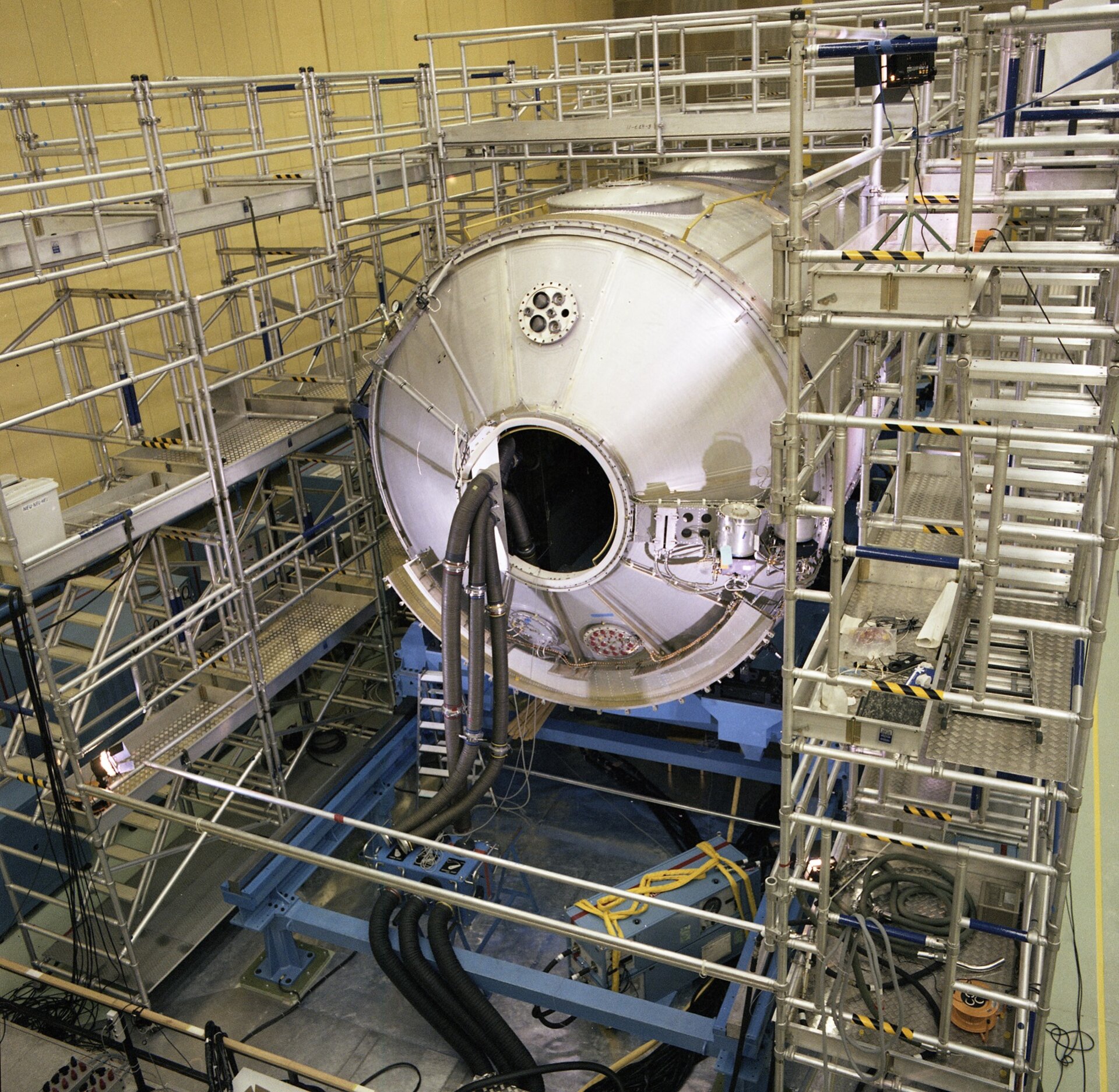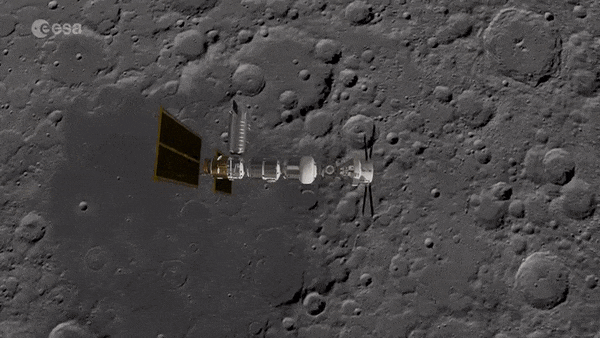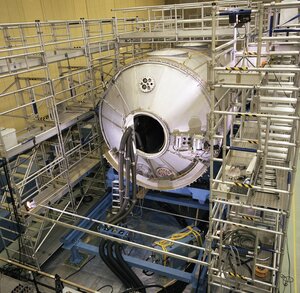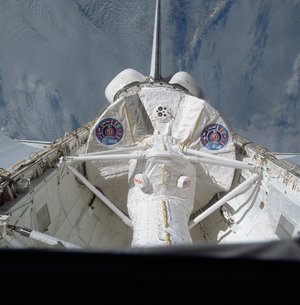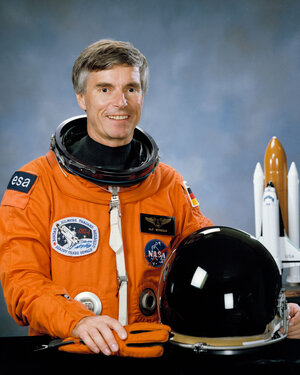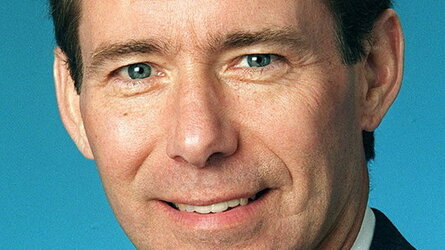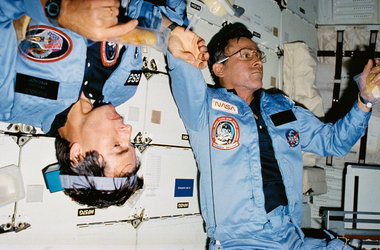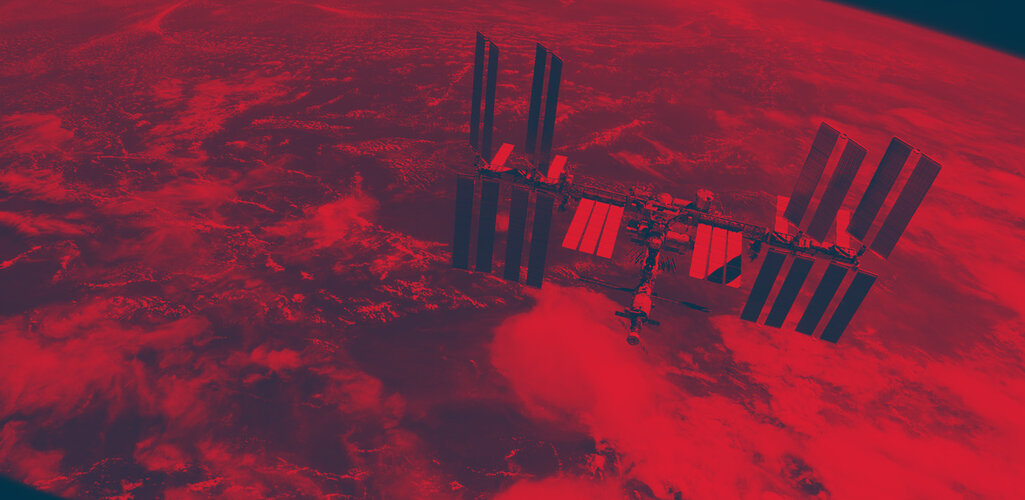How we made Spacelab
On 28 November 1983 European human spaceflight took a giant leap forward. Not only did German Ulf Merbold become the first ESA astronaut in space, but along with him travelled the European-made Spacelab. Carried in the Space Shuttle’s cargo bay, Spacelab converted the Shuttle into a highly productive orbital laboratory.
Previous science experiments in space had been performed on a best-effort basis, aboard spacecraft whose primary purpose was to journey through the void. Even the Skylab space station had been repurposed from a Saturn V upper stage.

Spacelab was different. For the first time a spacecraft was being designed specifically for work in orbit. The comfortable, shirtsleeves environment that resulted set the standard for all crewed modules to follow – including those making up the International Space Station and now the new Axiom and Gateway stations.
While often remembered today as simply a pressurised module, Spacelab was a fully customisable system: either a ‘long’ or ‘short’ module could be combined with multiple pallets for hosting external experiments, including a pointing system for space telescopes or other instruments. The module itself incorporated a window for observation and scientific airlock for deploying payloads outside, while hosting dozens of experiments per flight.

Europe agreed to take on Spacelab in 1973, setting the scene for a decade of hard work. The new-formed ESA (established in 1975) and its industrial partners confronted an extremely steep learning curve. Making Spacelab work involved mastering myriad disciplines including structural engineering, life support, thermal control, data management and human factors design, plus figuring out how to fit them all together. A total of 10 ESA Member States worked on the project, with West Germany, Italy and France in the lead.
Gathering a team; readying astronauts
Jochen Graf, ESA Head of Spacelab Flight Operations: I was recruited by Heinz Stoewer, overseeing the Spacelab programme – who later became well known as a pioneer of European systems engineering. He handed me the task of setting up how Spacelab would operate in orbit.
Alan Thirkettle, ESA Head of Spacelab Mechanical Engineering: We had a team of people who knew lots of good technical things, but we knew nothing at all about managing a human spaceflight programme… NASA, and in particular the Marshall Spaceflight Center was superb in terms of data exchange. I never came upon a situation where we were told ‘No, we can’t tell you that.’

Jochen Graf: Because we’d never done anything like this before NASA gave us a lot of support, sending specialists over to our technical centre ESTEC to advise our teams. These experts included Mel Brooks, who had been working for the Astronaut Office. He’d helped put people on the Moon and now he really wanted to do something for science in space.
Mel Brooks, NASA turned ESA member of Spacelab management team (from NASA Oral History interview): They asked me to help with the selection criteria and training criteria for the astronauts, and I got to know all those guys really well.
Three ESA astronauts would fly on Shuttle Spacelab missions in exchange for Europe delivering its hardware. Mel Brooks was instrumental in ensuring that most ESA astronauts train as general-purpose ‘mission specialists’, rather than payload specialists tied to particular equipment – a principle enduring to this day.

Ulf Merbold, ESA astronaut: At that time it was still not certain whether human spaceflight would be accepted as a permanent programme within ESA or whether it would be terminated after Spacelab-1. There were times when I did not feel secure but it was a great endeavour. It was fascinating to work with so many different scientists, to talk to and learn from so many people from different backgrounds…. [Being] the first non-Americans in the US space programme was really something special. When we started training for Spacelab-1 in Huntsville, Alabama, we received a warm welcome.
Jochen Graf: Our NASA specialists advisors returned to the US once their work was done, but Mel decided there was still enough to do, in terms of planning for operations, so asked if he could join ESA. Of course we were glad to have him! Mel put in a lot of work on Spacelab’s Material Science Double Rack, especially challenging because it included metal furnaces.
Mel Brooks: I mean, this thing, for example, the furnaces had doors that opened up to put samples in. The samples contained highly toxic materials, and the crew had to handle these. Also the furnace had an access to vacuum, so it was possible to vent the whole cabin down at the vacuum through this furnace… plus, they heated it up to 1 600 degrees Centigrade! … It was a real challenge to get that developed, qualified to our own satisfaction that it would work, plus to satisfy NASA that we had done it right and all that, and get it accepted.

Fitting Spacelab with the Shuttle
Jochen Graf: Mel and I had worked closely together, putting a lot of work into the ‘Man Machine Interface’, setting how astronauts would work with Spacelab systems. We decided if you make an error then it shouldn’t lead to any catastrophic failure.
It soon became clear that Spacelab needed a control panel on the Shuttle flight deck. At first NASA didn’t want European hardware in their Shuttle – they imagined Spacelab as a purely passive, self-contained cargo. It became clear though that Spacelab would need to be powered up in advance, have its air conditioning running so it was safe for the crew to enter before its hatch was opened. So this ‘R7’ control panel went through a lot of testing from astronauts and technical reviewers, basically trying to make it fail – but they couldn’t, and agreed to its inclusion.
The Italians built Spacelab modules out of two shells, into modules which could be bolted together. NASA admired the manufacturing techniques that Italian contractor Aeritalia had developed and later, there had even been a discussion that they should build all the modules of the ISS – in the event they built three others, along with Columbus.

Spacelab’s layout
Jochen Graf: For the interior layout, we had the advice of astronauts from Skylab – Owen Garriott and Bob Parker – to draw upon. We ended up with a darker floor and lighter ceiling because astronauts prefer to orient themselves that way. We considered shoes to lock onto the floor but they’d tried that on Skylab already. Instead we had soft cloth loops you could slip your feet into – because in weightlessness your legs just get in the way.
Ulf Merbold: Spacelab as a scientific platform performed so well; it was also very comfortable as regards the quality of its life support – that means noise, illumination, the quality of air and also the support provided to the various scientific instruments.
Jochen Graf: We came up with the payload racks, as a way to standardise the experiments which would be coming from all over Europe and the US, so things could be put in and out easily, and that made astronaut training much simpler too. Later this idea progressed into the Space Station of course. Essentially it was largely the same Spacelab team that went on to develop Columbus, the ATV and the other European elements of the ISS.


Access the video
Introducing innovation
Jochen Graf: In Heinz, Spacelab had a very charismatic leader who knew how to get people motivated. He said ‘The Americans have all the money, which we in Europe don’t. We have to find easier ways to do things.’
For example, with Skylab’s scientific airlock, instead of having a complex design with multiple latches, our contractors came up with a very simple but effective design for the inside airlock hatch, just a round metal piece that would be held in place by the difference in pressure between the cabin and inside the airlock. The commander John Young didn’t like it at all but it passed critical design review so he couldn’t force us to change it.
Access to Spacelab would be through the Shuttle mid-deck – through a tunnel needed to link up the two differently aligned hatches. Initially STS-9 commander John Young had insisted that Spacelab’s hatch be closed while operating to avoid any danger to the Orbiter, but Owen Garriott and Bob Parker convinced NASA this might endanger Spacelab occupants if they ever needed to evacuate rapidly.

Jochen Graf: In fact the final version of the flight procedure stated the Spacelab hatch had to be closed, with the word ‘ajar’ in brackets after it!
For our Instrument Pointing System, used to direct telescopes and other instruments on the external pallets, instead of having a set of big rings manoeuvring it around, one engineer came up with a straight tube bolted down to a single plate, moved about by three much smaller motors. It took Marshall a long time to approve. It was so innovative we thought about patenting it, but there was no time, so we went ahead and built it.
Reviewing the IPS, the astronauts wanted to have a control panel they could steer with a handle – their attitude was that they wanted control over everything. But we had to say no – they would control it by entering coordinates instead. The IPS had to incorporate anti-collision avoidance software, because otherwise it might hit some part of the Shuttle, like the radiators, and maybe do damage. That took a lot of fighting; we couldn’t give the astronauts too much of a free hand here.

A total of two Spacelabs were built at MBB/ERNO in Bremen, Germany. The first Spacelab module had been funded by ESA, while the second was purchased by NASA, following the terms of the 1973 Memorandum of Understanding.
The first test integration with the Shuttle didn’t go well – nothing worked – but ESA engineers eventually traced the fault to the Shuttle side and everything was fixed. Long months of work followed, including the integration of tonnes of payloads from across Europe and the US. A little under a decade on from its beginning, Spacelab was ready to fly.














 Germany
Germany
 Austria
Austria
 Belgium
Belgium
 Denmark
Denmark
 Spain
Spain
 Estonia
Estonia
 Finland
Finland
 France
France
 Greece
Greece
 Hungary
Hungary
 Ireland
Ireland
 Italy
Italy
 Luxembourg
Luxembourg
 Norway
Norway
 The Netherlands
The Netherlands
 Poland
Poland
 Portugal
Portugal
 Czechia
Czechia
 Romania
Romania
 United Kingdom
United Kingdom
 Slovenia
Slovenia
 Sweden
Sweden
 Switzerland
Switzerland

























